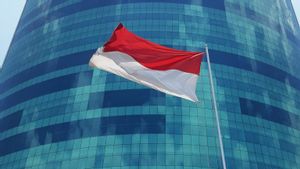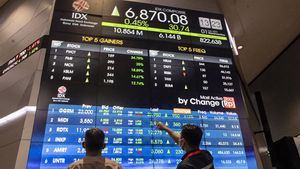JAKARTA - Bank Indonesia (BI) noted that Indonesia's foreign debt (ULN) reached 422.6 billion US dollars as of the end of February 2021 or the equivalent of IDR 6,164.46 trillion (exchange rate of IDR 14,587 per US dollar). This position rose 4 percent (yoy), higher than the previous month's growth of 2.7 percent (yoy). This figure shows Indonesia's foreign debt is getting bigger.
Responding to the swelling of the external debt, a member of Commission XI DPR RI from the PKS faction, Anis Byarwati said that he had often reminded the government about this debt.
"We have often highlighted and also reminded the government regarding the debt which is getting bigger and bigger," he said.
Anis explained that the reality currently faced is that the APBN deficit has widened, debts have soared, but the Government has failed to spend the debt.
"This can be seen from the widening of the fiscal deficit from 2.2 percent (2019) to 6.3 percent (2020) and it is estimated that there will still be a deficit of 5.7 percent in 2021," he said in a statement received by VOI, Monday, 3. May.
Anis, who serves as deputy chairman of the DPR RI's State Financial Accountability Agency (BAKN) explained that deficits are a normal step in times of recession, but still require caution in implementing this deficit policy. And most of the APBN deficit is financed by debt. "This means that the wider the deficit, the bigger the debt," he said.
The Chairman of the DPP PKS for Economy and Finance added that to maximize growth, of course debt must be used. But what often happens is that the Government fails to spend the debt. This is reflected in the amount of excess budget financing (SILPA) for the last 5 years, which has reached IDR 10-30 trillion each year.
Furthermore Anis emphasized that this widening deficit was caused by the high budget for National Economic Rescue (PEN). The latest data shows that the realization of the PEN budget had stalled at the beginning, then rushed over at the end of the year. The realization of the national economic recovery program (PEN) until the end of 2020 was recorded at IDR 579.78 trillion or 83.4 percent of the ceiling of IDR 695.2 trillion.
"This will certainly be detrimental, because the debt that has been withdrawn is not maximally utilized to save the national economy," said Anis.
During the last few years, Indonesia's primary balance has always been negative. When the primary balance is negative, it means that the Government is implementing a policy of digging and closing the holes. The government issues new debts to pay off old debts. "This certainly does not bode well for Indonesia's fiscal sustainability," said Anis.
Anis reminded an important note for the government, especially the Minister of Finance, that during the pre-pandemic period, Indonesia's debt to GDP ratio continued to increase, from initially 24 percent (2014) to 30.2 percent (2019). The increase in the debt to GDP ratio shows that during that period the increase in debt was higher than the increase in GDP. This means that government debt has not been productive enough to boost national GDP. In 2020, the debt to GDP ratio is estimated to reach 37 percent and will continue to increase to 41 percent in 2021.
"This is an unfavorable signal, which means that the government will find it difficult to control the rate of debt in the future," he concluded.
The English, Chinese, Japanese, Arabic, and French versions are automatically generated by the AI. So there may still be inaccuracies in translating, please always see Indonesian as our main language. (system supported by DigitalSiber.id)











